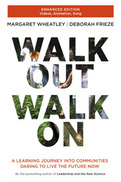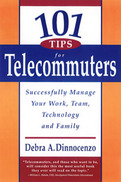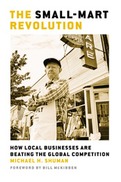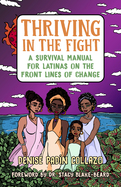Provides an intimate experience of how seven healthy and resilient communities took on intractable problems by working together in new and different ways.
The Enhanced Edition includes 25 minutes of animation, video, and audio. The animation shows the “Two Loops Theory of Change” with a voiceover from co-author Deborah Frieze. Three videos show inspirational “Walk On” communities in Brazil, South Africa, and India. This edition also includes the “Walk Out Walk On” theme song.
- 2012 Nautilus Silver Award Winner in Social Change Category
-
By the bestselling author of Leadership and the New Science and Turning to One Another
-
Provides an intimate experience of how seven healthy and resilient communities took on intractable problems by working together in new and different ways
-
immerses the reader in the experience of each community through stories, essays, first-person accounts, and over 100 color photos
This is an era of increasingly complex problems, fewer and fewer resources to address them, and failing solutions. Is it possible to find viable solutions to the challenges we face today as individuals, communities, and nations? This inspiring book takes readers on a learning journey to seven communities around the world to meet people who have "walked out" of limiting beliefs and assumptions and "walked on" to create healthy and resilient communities. These Walk Outs who Walk On use their ingenuity and caring to figure out how to work with what they have to create what they need.
In India, we meet people from Shikshantar, a community that is rejecting the modern culture of money, with its emphasis on self-interest and scarcity, in favor of a gift culture based on generosity and reciprocity. In Zimbabwe, we discover the capacity people have to adapt and invent new ways of surviving and thriving in the face of total systems collapse.
Through essays, stories, and beautiful color photographs, Wheatley and Frieze immerse us in these communities that are accomplishing extraordinary things by relying on everyone to be an entrepreneur, a leader, an artist. From Mexico to Greece, from Columbus, Ohio to Johannesburg, South Africa, we discover that every community has within itself the ingenuity, intelligence, and inventiveness to solve the seemingly insolvable. "It's almost like we discovered a gift inside ourselves," one Brazilian said, "something that was already there.
In 101 Tips for Telecommuters, seasoned telecommuter Debra Dinnocenzo shares her practical, easy-to-implement "action tips" for making telecommuting as efficient and productive as possible. Written for full-time, occasional, and aspiring telecommuters, this helpful book covers everything from managing one's own time, balancing telecommuting with family demands, and working effectively with others from afar to networking the "virtual" way, getting a grip on technological overkill and even resisting the ever-beckoning refrigerator when working at home!
Dinnocenzo offers useful advice on special self-management factors to consider when telecommuting; how to keep in touch with all the people-coworkers, managers, support personnel, customers, and others-who make up your telecommuting world; and even how to nurture crucial ties with suppliers, vendors, and service providers.
In the new age of professional mobility, 101 Tips for Telecommuters is the perfect guide for the millions of Americans who want to succeed in this exciting and challenging new way of work.
-
A concise, user-friendly guide for telecommuters, written by a veteran telecommuting executive with more than a decade of first-hand experience as both a telecommuter and telemanager
-
Focuses on the myriad tasks and roles telecommuters must handle on a daily basis
-
Includes a Telecommuter Self-Assessment Checklist so readers can determine if telecommuting is right for them, a Telecommuter Start-Up Guide, and a Telecommuter Resource Guide to refer to whenever telecommuting gets tough
But in The Small-Mart Revolution, Michael Shuman shows that the benefits these mega-stores and huge corporations supposedly deliver to communities are illusory. Crunch the numbers and you'll find that locally owned businesses turn out to be much more reliable generators of good jobs, economic growth, tax dollars, community wealth, charitable contributions, social stability, and political participation. Unlike their global competitors, they do this without massive tax breaks and subsidies that often put local economies in a permanent hole. Plus, contrary to popular belief, local businesses are competitive with the multinationals--and gaining ground every day. Shuman highlights numerous trends that are making the old "bigger is better" economies of scale argument obsolete, and he describes a variety of innovative strategies these businesses are using to successfully compete with their over-sized competitors. He also shows how consumers, investors, and policymakers can support their own communities by "going local." The Small-Mart Revolution offers a robust alternative to "go-go" globalization, one that nurtures the creative capacities of local businesses and enables communities everywhere to thrive.
- Shows exactly why locally owned businesses are far more beneficial to their communities than massive chains like Wal-Mart
- Outlines specific strategies small and home-based businesses are using to successfully outcompete the world's largest companies
- Advises consumers, investors, policymakers, and organizers on how they can support the the local entrepreneurs who contribute to their communities
Winner of the gold medal at the International Latino Book Awards for Best Latina-Themed Book and Best Self-Transformational Book!
Doing the work of social change is hard. Waking up every day to take on the biggest challenges of our time can be overwhelming, and sometimes progress is hard to see. She understands that Latina and all women of color activists do their best work when they are thriving, not simply surviving.
Denise Padín Collazo has been there. She is the first Latina, the first woman of color, and the first woman period to raise a family and stay in the work of community organizing at Faith in Action, an international progressive network of 3,000 congregations and 2 million members. Drawing on her own experiences of triumph and failure, and those of other Latina activists, Collazo lays out three keys to thriving in the movement for social change: leading into your vision, living into the fullest version of yourself, and loving past negatives that hold you back. She also warns about the three signs that you may be surrendering: wishing for a future reality to emerge, wondering where your limits are, and waiting for permission and answers to come from others.
Using this framework, Collazo offers wise and compassionate advice on some of the most important leadership challenges facing Latina activists. She explains how you can integrate family and work, step out of the background and claim your leadership potential, confront anti-Blackness in your own culture, keep focused on your ultimate purpose, and raise the necessary resources to keep fighting for justice. This honest, practical, and inspirational book will help Latina activists to burn bright, not burn out.
2018
How to Get Involved, Speak Out, and Win in a World on Fire
A society that actively combats racism, treats climate change as a serious threat, and ensures that all people have a living wage and a decent life for themselves and their families is not a progressive pipe dream. Victories are being won every day, all over the country. But they didn't happen just by clicking “donate” on a website. Gordon Whitman says that fundamental change demands forming the kind of face-to-face relationships that have sustained every social movement in history.
For two decades, Whitman has been working with PICO National Network to equip tens of thousands to fight racial discrimination and economic injustice. He brings that experience to this book, describing five kinds of conversations that enable people to create organizations that can successfully overcome the forces of oppression and reaction.
The first conversation to have is with ourselves, to make sure we're clear about our purpose and in it for the long haul. Then we need to share the personal story of how we came to this point with others—there is no more powerful way to connect. They in turn will share their stories, and then we can have the third conversation, about becoming a team. This team reaches out to people they know to talk about their concerns and priorities, building a broad base of supporters.. Then, with our base at our back, we can have that final conversation, directly confronting the powers that be.
Of course, this isn't as simple as it sounds. Appropriately enough, Whitman uses stories, his own and others, to illustrate how best to handle these conversations and to show how they work together to build a movement. We can't just sit on the sidelines sharing angry social media posts or signing online petitions. We need to get directly involved, reach out, knock on doors, and bring our whole selves to the table if the changes our country so desperately need are ever going to come.
This is the most comprehensive guide available to the scenario planning process, offering a thorough discussion of the method's theoretical foundations and detailing a five-phase scenario planning system. Chermack uses a real-world case study to illuminate the entire process—from project preparation to scenario exploration, development, implementation, and project assessment. He provides specific techniques and tools for gathering and analyzing relevant data, structuring and managing projects, and avoiding common pitfalls.
-
Offers a comprehensive review of both the theory and practice of scenario planning
-
The only scenario planning book to address scenario implementation and assessment
-
Includes a casestudy to illustrate how the scenario planning system is applied in the real world
Scenario planning helps leaders, executives and decision-makers envision and develop strategies for multiple possible futures instead of just one. It enables organizations to become resilient and agile, carefully calibrating their responses and adapting quickly to new circumstances in a fast-changing environment.
This book is the most comprehensive treatment to date of the scenario planning process. Unlike existing books it offers a thorough discussion of the evolution and theoretical foundations of scenario planning, examining its connections to learning theory, decision-making theory, mental model theory and more. Chermack emphasizes that scenario planning is far more than a simple set of steps to follow, as so many other practice-focused books do -- he addresses the subtleties and complexities of planning. And, unique among scenario planning books, he deals not just with developing different scenarios but also with applying scenarios once they have been constructed, and assessing the impact of the scenario project.
Using a case study based on a real scenario project, Chermack lays out a comprehensive five phase scenario planning system -- project preparation, scenario exploration, scenario development, scenario implementation, and project assessment. Each chapter describes specific techniques for gathering and analyzing relevant data with a particular emphasis on the use of workshops to encourage dialogue. He offers a worksheet to help readers structure and manage scenario projects as well as avoid common pitfalls, and a discussion, based in recent neurological findings, of how scenario planning helps people to overcome barriers to creative thinking.





















